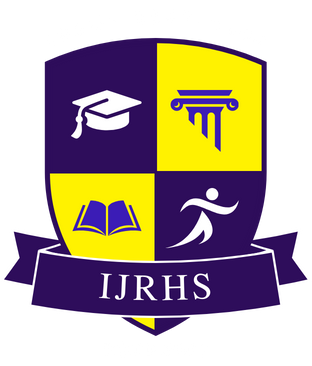![]()
DOI: https://doi.org/10.63345/ijrhs.net.v13.i5.4
Aditya Thakur
Independent Researcher
Himachal Pradesh, India
Abstract
In an era of increasing globalization and multicultural interaction, adolescents are frequently exposed to multilingual environments both within educational settings and social contexts. This manuscript examines how exposure to multiple languages influences cognitive load among adolescents, exploring whether the mental effort required for managing and switching between languages affects learning, attention, and working memory. Drawing upon cognitive load theory, bilingualism research, and developmental psychology, the study investigates intrinsic, extraneous, and germane cognitive loads in multilingual settings. A mixed-methods approach, incorporating standardized cognitive assessments, dual-task paradigms, and qualitative interviews, was employed to gauge cognitive load and coping strategies in adolescents aged 12 to 16. Findings indicate that while multilingual adolescents may initially experience elevated extraneous load due to language interference, they also develop enhanced executive control and adaptive strategies that reduce overall cognitive strain. Recommendations for educators include integrating scaffolding techniques and minimizing unnecessary linguistic complexity to support cognitive processing. Implications for educational policy and further research into adaptive cognitive mechanisms are discussed.
Keywords
multilingual environment cognitive load adolescents executive control bilingualism educational strategies
References
- https://user-images.githubusercontent.com/32909949/166109672-2378697d-ed71-4ccc-bdf0-bf5a7d10b5cf.png
- https://www.researchgate.net/publication/326635662/figure/fig1/AS:652736425111553@1532635899579/Schematic-representation-of-different-cognitive-loads-brief-description-and-principles.png
- Baddeley, A. (2000). The episodic buffer: A new component of working memory? Trends in Cognitive Sciences, 4 (11), 417–423. https://doi.org/10.1016/S1364-6613(00)01538-2
- Bialystok, E. (2001). Bilingualism in development: Language, literacy, and cognition. Cambridge University Press.
- Carlson, S. M., & Meltzoff, A. N. (2008). Bilingual experience and executive functioning in young children. Developmental Science, 11 (2), 282–298. https://doi.org/10.1111/j.1467-7687.2008.00675.x
- Cummins, J. (2000). Language, power, and pedagogy: Bilingual children in the crossfire. Multilingual Matters.
- Eviatar, Z., & Ibrahim, R. (2000). Reading strategies in first and second language. Journal of Research in Reading, 23 (2), 122–136. https://doi.org/10.1111/1467-9817.00111
- García, O., & Lin, A. M. Y. (2017). Translanguaging in bilingual education. Bilingual Education and Bilingualism, 34, 117–130. https://doi.org/10.4324/9781315632695
- Kroll, J. F., Bobb, S. C., & Hoshino, N. (2014). Two languages in mind: Bilingualism as a tool for investigating language, cognition, and the brain. Current Directions in Psychological Science, 23 (3), 159–163. https://doi.org/10.1177/0963721414528511
- Linck, J. A., Kroll, J. F., & Sunderman, G. (2009). Losing access to the native language while immersed in a second language: Evidence for the role of inhibition in second-language learning. Psychological Science, 20 (12), 1507–1515. https://doi.org/10.1111/j.1467-9280.2009.02480.x
- Marian, V., & Shook, A. (2012). The cognitive benefits of being bilingual. Cerebrum: The Dana Forum on Brain Science, 2012, 13.
- Mayer, R. E., & Moreno, R. (2003). Nine ways to reduce cognitive load in multimedia learning. Educational Psychologist, 38 (1), 43–52. https://doi.org/10.1207/S15326985EP3801_6
- Moreno, R., & Mayer, R. E. (2005). Cognitive principles of multimedia learning: The role of modality and contiguity. Journal of Educational Psychology, 97 (4), 721–737. https://doi.org/10.1037/0022-0663.97.4.721
- Paas, F., & van Merriënboer, J. J. G. (1994). Variability of worked examples and transfer of geometrical problem-solving skills: A cognitive-load approach. Journal of Educational Psychology, 86 (1), 122–133. https://doi.org/10.1037/0022-0663.86.1.122
- Schnotz, W., & Kürschner, C. (2007). A reconsideration of cognitive load theory. Educational Psychology Review, 19 (4), 469–508. https://doi.org/10.1007/s10648-007-9053-4
- Sweller, J. (1988). Cognitive load during problem solving: Effects on learning. Cognitive Science, 12 (2), 257–285. https://doi.org/10.1207/s15516709cog1202_4
- Sweller, J., van Merriënboer, J. J. G., & Paas, F. (1998). Cognitive architecture and instructional design. Educational Psychology Review, 10 (3), 251–296. https://doi.org/10.1023/A:1022193728205
- Tse, L. (2001). “Why don’t they learn English?” Separating fact from fallacy in the U.S. language debate. Delta Systems Co.
- Yang, Y.-F., & Montero, I. (2006). Cognitive advantages of young bilinguals: Evidence from metalinguistic awareness and working memory. Journal of Cognitive Education and Psychology, 5 (2), 135–144. https://doi.org/10.1891/1945-8959.5.2.135
- Yow, W. Q. N., & Li, H. (2015). Effects of bilingualism on working memory: Evidence from verbal and spatial tasks. Bilingualism: Language and Cognition, 18 (1), 122–136. https://doi.org/10.1017/S1366728913000148
- Zhang, L. J., & Koda, K. (2011). Morphological awareness and vocabulary acquisition in second language learning: A cognitive-linguistic perspective. TESOL Quarterly, 45 (3), 525–546. https://doi.org/10.5054/tq.2011.261195
- Zhou, X., & Marslen-Wilson, W. D. (2000). Language processing in bilinguals: Evidence for inhibitory mechanisms. Journal of Memory and Language, 44 (3), 440–464. https://doi.org/10.1006/jmla.2000.2716
